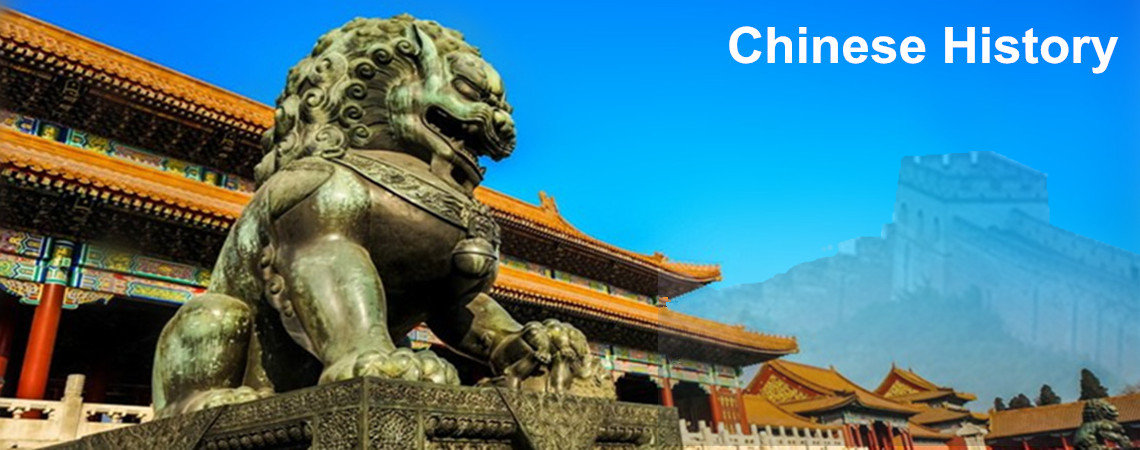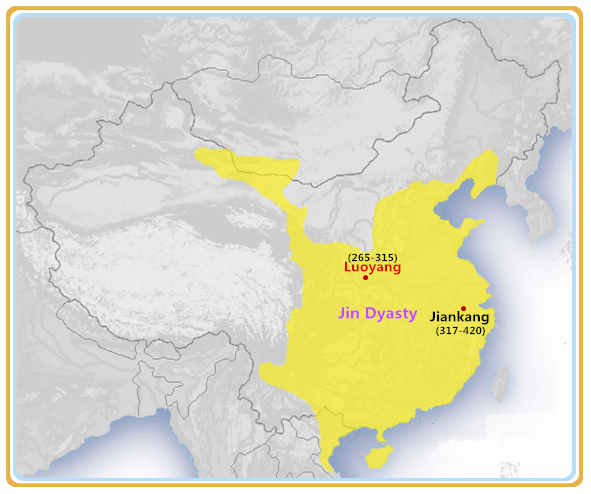
Eastern Jin Dynasty(317-420)
Facts of Eastern Jin Dynasty
Time: 317-420
Location of Capital: Jiankang ( modern Nanjing City)
Emperors: 11 emperors
Replaced by: Southern and Northern Dynasties
Introducetion of the Eastern Jin Dynasty
 Sima Rui Founded the Eastern Jin in 317
Sima Rui Founded the Eastern Jin in 317
In 316 when the last monarch of Western Jin, Emperor Min, was captured by the Huns, some former chancellors of the Western Jin were busy planning the resumption of the Jin Dynasty. In 317, Langya King, Sima Rui was supported by both clans in the central plains and the South of Yangtze River and proclaimed himself Emperor Yuan in Jiankang (currently Nanjing). Since then, the Eastern Jin Dynasty was founded.
In Early Period
The ruling class consisted of noble families from the central plains and aboriginal clans South of Yangtze River. Due to cultural differences based on different regions, those two factions took opposite political sides and the noble families from the central plains held the main power. During Emperor Yuan's reign, chancellors from the northern area tried to ease the tension between the two political factions but it was in vain. Later, the southern clans launched rebellions many times which greatly weakened the rule of the court.
Decline and Ruin
In the late period of Emperor Yuan's reign, many chancellors in the Eastern Jin Court coveted the throne and started rebellions. However, all the rebellions were successfully suppressed by the court.
In 385, Emperor Xiaowu (the last but two emperor of the Eastern Jin) gave his power to his brother Sima Daozi and his nephew Sima Yuanxian, who misruled the country by wantonly exploiting the people. This accelerated the partition of the royal power. In 398, the rebellious army conquered the western area of the capital city Jiankang and the power of the Court became more restricted. Since then, the dynasty was in decline.
During the reign of Emperor An (the penultimate emperor of Eastern Jin), a rebellious branch of the army led by Sun En severely attacked the regime of Eastern Jin. At that time, Huan Xuan, one of leaders of the noble rebellious forces, took this advantage, captured the capital city, dethroned Emperor An and proclaimed himself emperor. Later, another group of rebellious army led by Liu Yu defeated Xuan Huan and put Sima Dewen on the throne as Emperor Gong. Nominally, the regime was resumed but actually the real power was completely controlled by Liu Yu who had already plotted to usurp the throne.
In 420, Liu Yu dethroned Emperor Gong and established Kingdom of Song, ending the Eastern Jin Dynasty.
Military Activities
Although the regime of Eastern Jin was founded in the South of Yangtze River, each emperor had the wish to recover the lost territory in the northern area which had been governed by the Former Qin (Qianqin) and Later Zhao (Houzhao). Northern expeditions were also launched many times led by the four Wang, Xie, Huan and Geng families.
In 311, general Zu Di reoccupied Hebei Province. But he did not eventually accomplish the cause of unification because of the exclusion of the Court. In 383, with a six to one disparity in military strength, Xie An, general of Eastern Jin defeated the Former Qin's troop led by Fu Jian along Feishui River in a famous battle of Chinese history - Battle of Feishui. It was the first victory won by Eastern Jin Court, in which many lost territories were regained.
In that period of the Eastern Jin Dynasty, southern and northern culture had a chance to integrate with each other. Since the northern area of China was dominated by the so-called 'Five Hus and Sixteen States' of Chinese history. Living in the central plains, those ethnic minorities were gradually assimilated by the Han people.
In addition, the handicraft industry was greatly improved, since the technique exchange between the western area and the eastern area. Meanwhile, Chinese ancient literature made great progress in Eastern Jin Dynasty and a group of poets appeared, such as Xie Lingyun who was good at landscape poems and Tao Yuanming who was famous for writing pastoral poems. They made lots of reforms on classical poems which paved the way for the prosperity of poetry in Sui and Tang Dynasties.







 Ask Questions ?
Ask Questions ?